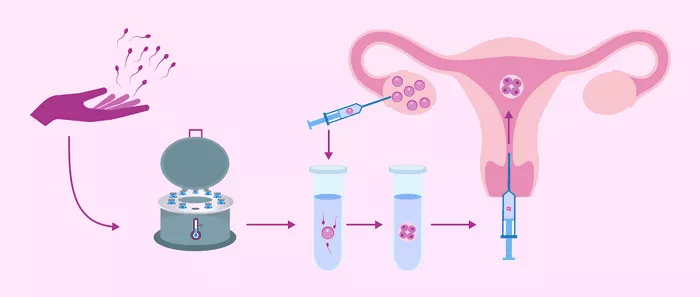The cost of a single in vitro fertilization (IVF) cycle in Nigeria has surged to approximately N2.1 million ($2,730), marking a staggering 250% increase from the 2019 price range of N600,000 to N1.2 million. This escalation has rendered IVF less accessible, particularly for middle-income families, as the average annual income hovers around N2 million ($2,600). For many, the cost of a single IVF cycle now exceeds their annual salary, especially considering that multiple cycles are often needed to achieve a successful pregnancy.
Dr. Kemi Ailoje, a Reproductive Endocrinologist and CEO of Lifelink Fertility, noted a growing acceptance of assisted reproductive technologies among couples grappling with infertility. “While recent awareness efforts have been beneficial, particularly in urban areas, much more needs to be done to reach rural communities,” she emphasized.
Current market analysis reveals that two IVF cycles can cost around N3.8 million ($4,940), and three cycles may rise to N5.6 million ($7,250). Some clinics charge as high as N5.5 million for two fresh treatment cycles and up to N7.6 million for three, further intensifying the financial burden on couples seeking fertility solutions.
According to the Association of Fertility and Reproductive Health of Nigeria, there are now approximately 180 IVF clinics operating across the country, a significant increase from previous years. However, the escalating costs mean that many couples are faced with limited options for treatment.
When compared to global IVF pricing, Nigeria’s costs present a complex picture. In the United States, IVF costs range from $14,000 to $20,000 (N20 million to N33.3 million) per cycle, while prices in the United Kingdom range from £5,000 to £8,000 (N4.6 million to N7.4 million). In Turkey, treatments start at €1,700, with costs in Denmark and Spain ranging from €3,500 to €4,000.
The global IVF market is projected to grow significantly, expanding from a valuation of $27 billion in 2022 to an anticipated $37.4 billion by 2030, reflecting a $10.4 billion increase over the next eight years, according to Grand View Research, Inc. This growth is driven by a compound annual growth rate (CAGR) of 5.54% from 2024 to 2030 and is largely attributed to a rising demand for fertility treatments as global fertility rates decline.
Prof. Oladapo Ashiru, founder of the Medical Art Center and Secretary General of the International Federation of Fertility Societies, stresses the urgency of the situation. “Globally, one in six people faces fertility challenges, but in Nigeria, it’s even more acute—one in four. Access to necessary care is a significant issue,” he stated. Approximately 35% of individuals hoping to conceive may require assisted reproductive technology.
Ashiru pointed out that IVF has emerged as a vital health tool for addressing reproductive health issues. “Nigerians are increasingly considering IVF because it offers a critical solution for those struggling to conceive naturally,” he explained. Notably, individuals are also traveling from Europe, North America, and West Africa to Nigeria for treatment, as the exchange rate makes IVF more affordable compared to their home countries.
The dramatic rise in costs has made IVF increasingly inaccessible for the average Nigerian. Most health insurance plans do not cover fertility treatments, and government initiatives on reproductive health typically focus on maternal and child health, leaving IVF as a costly out-of-pocket expense for couples facing infertility challenges.
Related topics:



























